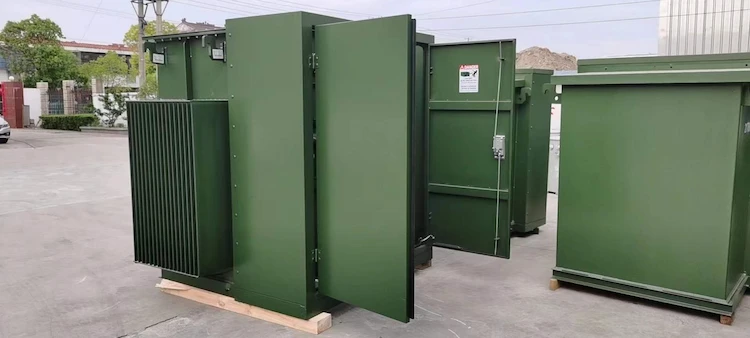
The hum of electricity is a constant, almost unnoticed backdrop to modern life. From the glowing screens of our devices to the whirring machinery of industry, a vast and intricate electrical grid tirelessly delivers power. Within this sophisticated network, one unassuming yet critically important component often operates out of sight: the padmount substation. These compact, ground-level units are the unsung heroes of localized power distribution, playing a vital role in bridging the gap between high-voltage transmission lines and the everyday power needs of homes, businesses, and communities. Understanding the function and significance of the padmount substation is key to appreciating the robust and reliable electrical infrastructure that powers our world.
The Journey of Electricity: From Generation to Consumption
To fully grasp the importance of a padmount substation, it’s helpful to trace the journey of electricity. Power plants, whether fueled by fossil fuels, nuclear energy, or renewable sources like solar and wind, generate electricity at very high voltages. This high voltage is essential for efficient long-distance transmission, minimizing energy loss as it travels across vast landscapes via towering transmission lines. However, these extremely high voltages are far too dangerous and impractical for direct use by consumers.
This is where the concept of voltage transformation becomes crucial. Before electricity can be safely utilized, its voltage must be stepped down. This process typically occurs in stages. Large, centralized substations connected to the transmission grid perform the initial step-down, reducing the voltage to a level suitable for sub-transmission or primary distribution lines. These lines then carry the power closer to its end-users.
The Indispensable Role of the Padmount Substation
As electricity approaches its final destination, it undergoes one more critical transformation, often facilitated by a padmount substation. These substations are essentially self-contained electrical enclosures, typically green or grey, designed to be installed on a concrete pad at ground level. Their compact design and aesthetic appeal make them ideal for residential areas, commercial complexes, and industrial parks where traditional, open-air substations would be impractical or unsightly.
The primary function of a padmount substation is to take the medium-voltage electricity from the primary distribution lines (typically ranging from a few kilovolts to tens of kilovolts) and step it down to the lower voltages required for residential and commercial use (e.g., 120/240 volts or 277/480 volts in North America, or 230/400 volts in many other parts of the world). This final voltage reduction is what allows household appliances, lighting, and office equipment to operate safely and efficiently.
Beyond voltage transformation, a padmount substation also incorporates essential protective devices. These include circuit breakers and fuses that automatically interrupt the power supply in the event of a fault, such as a short circuit or an overload. This protection is vital for preventing damage to the electrical system, minimizing fire hazards, and ensuring the safety of people and property. Furthermore, some padmount substations may include metering equipment to measure electricity consumption and various control mechanisms for system monitoring and operation.
Design and Features of a Padmount Substation
The robust design of a padmount substation is a testament to its critical role. They are typically constructed with tamper-resistant, weather-resistant enclosures made of durable materials like steel, providing protection against environmental elements, vandalism, and accidental contact. The enclosed design also contributes to safety by preventing access to live electrical components, making them suitable for public spaces.
Internally, a padmount substation houses several key components. The most prominent is the transformer, which is responsible for the voltage step-down. These transformers are often filled with dielectric fluid (like mineral oil or a biodegradable equivalent) for insulation and cooling. Other components include high-voltage bushings for connecting to the primary distribution lines, low-voltage bushings for connecting to the consumer’s electrical service, and various switching and protective devices. The compact footprint of a padmount substation minimizes its visual impact and allows for flexible installation in diverse urban and suburban environments.
Advantages and Applications of Padmount Substations
The widespread adoption of the padmount substation is driven by several significant advantages. Their enclosed, tamper-proof design enhances public safety, particularly in accessible areas. Their aesthetic appeal and compact size make them a preferred choice for residential developments, shopping centers, and office parks where traditional substations would be visually intrusive. Furthermore, their relatively quick installation time and reduced land requirements contribute to cost-effectiveness in infrastructure development.
Padmount substations are ubiquitous in modern electrical grids. They are found in:
- Residential neighborhoods: Powering individual homes and entire subdivisions.
- Commercial complexes: Providing electricity to retail stores, restaurants, and office buildings.
- Industrial parks: Supplying power to manufacturing facilities and warehouses.
- Educational institutions and healthcare facilities: Ensuring a reliable power supply for schools, colleges, and hospitals.
- Recreational areas: Supporting lighting and facilities in parks and sports complexes.
Essentially, wherever localized, safe, and efficient power distribution is needed, a padmount substation is likely to be found.
Maintaining the Flow: Future of Padmount Substations
As our reliance on electricity continues to grow and the electrical grid evolves towards greater intelligence and resilience, the role of the padmount substation will only become more pronounced. Future iterations may incorporate advanced smart grid technologies, enabling remote monitoring, diagnostics, and even automated fault detection and isolation. The integration of renewable energy sources, such as rooftop solar panels and localized battery storage, will also necessitate increasingly sophisticated localized power management, further highlighting the importance of these unassuming yet vital pieces of infrastructure.
In conclusion, the padmount substation may not always be visible, but its contribution to our daily lives is undeniable. It is a critical link in the complex chain of electrical infrastructure, ensuring that power generated miles away reaches our homes and businesses safely and efficiently. By transforming high-voltage electricity into usable power and providing essential protection, the padmount substation truly powers our world, silently and reliably.



